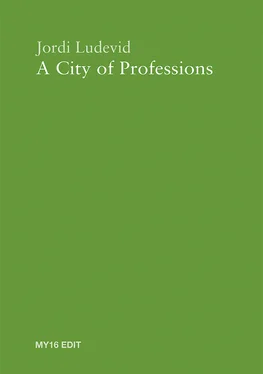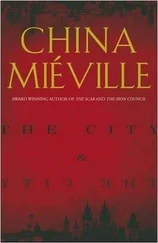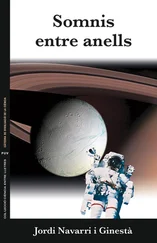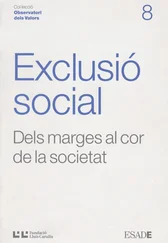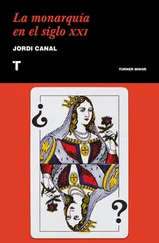The interpretation of this institutional silence regarding the professions is by no means self-evident. One should not assume that it is part of a decline, a dearth of proposals, a perplexity or an absence of enthusiasm and conviction that needs to be remedied. On the contrary, it is preferable to believe that the reason is not that institutions have nothing to say, or that they are afraid to say it, but that they are waiting for an opportunity to do so.
And yet, while all this is happening, the key words professional, professionalism, professions, seem to have been lost or overshadowed. These pages are a reflection that posits a possible, though by no means certain, recovery.
Thus, in the face of such a far-reaching challenge, it is inspiring to recall George Steiner3 and Paul Virilio4 in their shared answer to the question of how to regenerate democracy: «recovering the words». And furthermore, according to the urbanist Virilio, «by recovering the city». However, recovering the words is, in this case, a long and uncertain journey, a drawn-out exercise, which of course involves specific challenges.
3George Steiner (1929-2020), humanist, writer and philosopher of language.
4Paul Virilio (1932-2018), urban planner and philosopher.
The Challenges
Maps
The first challenge is precisely the complex nature of the professional fact, its variable geometry and its variable intensity, behind the three key words in question. Indeed, we must take into account the commonalities, but also the differences, between professionalism, professionals and professions, three words that define the professional fact as a whole, even if they evoke different worlds and have a bearing on different groups. And yet, in order to have a complete and sensible, useful and wide-ranging, meaningful vision of the professional fact, it is advisable to refer to all three, because as they are essential, they stand as complementary, interdependent and united.
Simplifying notably and following Victoria Camps and Donald Schön, professionalism would be «a democratic virtue available to all, but also an art»; a professional would be «an expert with values (virtues), committed to practical knowledge and to people and who does not act alone»; and, finally, a profession, «the set of professionals at the service of the same internal good or public mission, who share an institution and end up also sharing a common character (ethos)». The three words are certainly related and interdependent, but their actual sociological scope, their objective and subjective audience, is different. Who are we addressing, then? What and who are we really talking about?
To help us we can turn to maps. Although, as Paul Valéry argued, «the simple is false and the complex unusable», thinking by mapping has been established as beneficial in an intermediate space. Maps provide an interpretation of reality which, without exhausting it, also describes it. Often, a new and surprising vision appears before our eyes. Thus, reflecting on the professional fact would be based, first of all, on the maps corresponding to these three key words: professionalism, professionals, professions.
The map of professionalism would reflect the enormous potential importance of the professional fact, far beyond academia, with a greater quantitative scope and a greater sphere of influence than the number of members of professional associations – and even non-members, who are, evidently, much larger in number than the professions. Professionalism, a job well done, encompasses much more than just professionals and professions.
A second map would correspond to the recognition and location of professionals, which includes, as we stated before, more than two million members of professional associations in Spain alone – around 4.3% of the national population. If we extrapolate this percentage to the world population, we would be talking about some 350 million professionals in the world, all of them linked institutionally in a complex system, which is very much in need of improvement, but which is real and global. Furthermore, and although not all university graduates become professionals, university enrolment in the world increased by 53% during the period 2000-2009 according to UNESCO, with 262 million students expected by 2025. With the number of university students in the world standing at 153 million in 2009, we can deduce that the socialisation and massification of professionals is an evident and growing, proven fact. To give an example, there are around 3.5 million architects in the world, and around 70,000 in Spain.
Moreover, according to some sociologists this 4.3% of the total population represents around 25% of the active population, a spectacular figure. This percentage is even higher in cities and much higher in large cities or global cities. In fact, in large global cities all over the world, professionals already make up a majority of the working population and also of voters. We are not talking, therefore, about a minority, but rather, as Talcott Parsons states, «the most important component of modern societies». It is not brash but reasonable to affirm that cities are mainly and hegemonically made up of professionals, thus embodying true cities of professions.
Finally, there would be a third map, which would be a list of all the existing professions in the world. Depending on the criteria and the strictness of their recognition, which is not standardised, this list would be difficult and variable, debatable and complex: some 530 professions in Europe; some 320 in Spain; but only 40 professions that are certified, licensed and regulated in our country and in the European Union.5 This third map would reflect the enormous diversity and internal institutional complexity that characterises the world of professions and trades. If we also take into account the fact that the engineering professions in Spain have specialised by subdividing, and that there are now 18, nine short-cycle and nine long-cycle, then we are talking about something much more specific and limited. There are 40 regulated professions, and if we considered engineering as a single profession, there would be 23. A chart produced by the technical services of Unión Profesional in 2017 further clarifies the reality of regulated professions in Spain. According to this study, there are 300 or more certified professions in Spain: 125 professions regulated under Annex 8 of Royal Decree 2006; 80 licensed professions; 44 with the dual status of regulated and standardised; 50 chartered professions with a recognised professional charter; and, finally, 33 professions associated with Unión Profesional.
Legal Cultures
A second difficulty and a second challenge stems from the fact that there are different legal cultures in the world, which greatly affects the treatment of the subject that concerns us.6 And although a subsequent in-depth analysis relativises these differences, the starting points, the common clichés, the initial «assumptions», are different and constitute a certain impediment, a difficulty. At least in Europe, we might say that there are two main cultural and popular models in this respect: one running from public law to private law (Southern, Latin countries, influenced by the Napoleonic codes and Roman law) and the other running in the opposite direction, from private law to public law (Northern countries, Anglo-Saxon culture). In both cases, professional institutions assert themselves and always see themselves as conspicuous members of civil society, but the fact is that they all have, or aspire to have, a public mandate and a special relationship with the State.
«Without the ‘What’ There is no ‘How’»
Finally, within the professions, a third difficulty is the dichotomy between the «what» and the «how» of the professional fact. In the world of professional institutions, reflections are generally focused on the «how» (legal and economic realities, legal and institutional problems), but very little on the «what» (the components of professionalism, professional autonomy, a job well done, its artistic foundation,7 craftsmanship, personal self-determination). A «what» that, due to its importance (without the «what» there is no «how»), must be clearly recognised and claimed, updated and promoted, in the wake of the «triumph of the markets», to quote Howard Gardner’s well-known expression, in the wake of the digital revolution and, above all, in the wake of individualisation,8 job insecurity and bureaucratisation. Our response to the clash between two worlds – that of the new economy and cybernetics on the one hand, and that of the aretè9 and craftsmanship10 on the other – seems to be individual, silent or aggressive depending on the circumstances; we are often indignant, nearly always dejected and pensive.
Читать дальше
